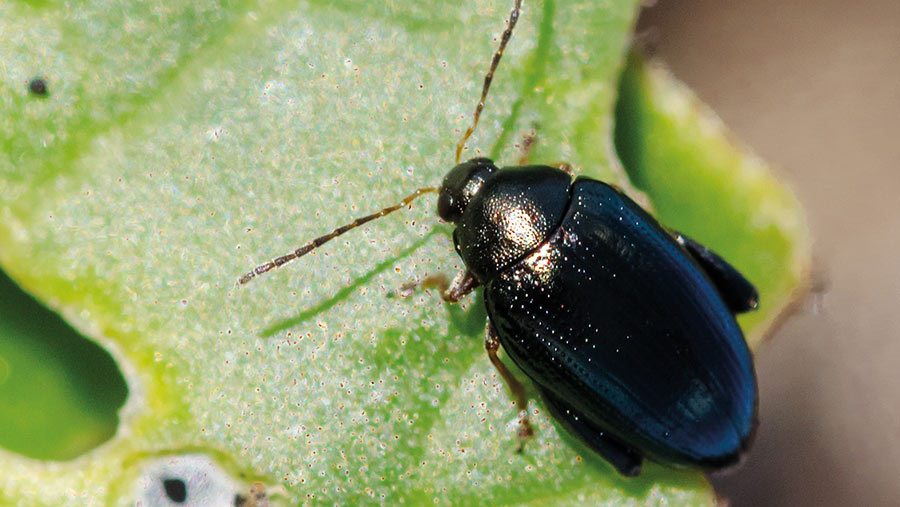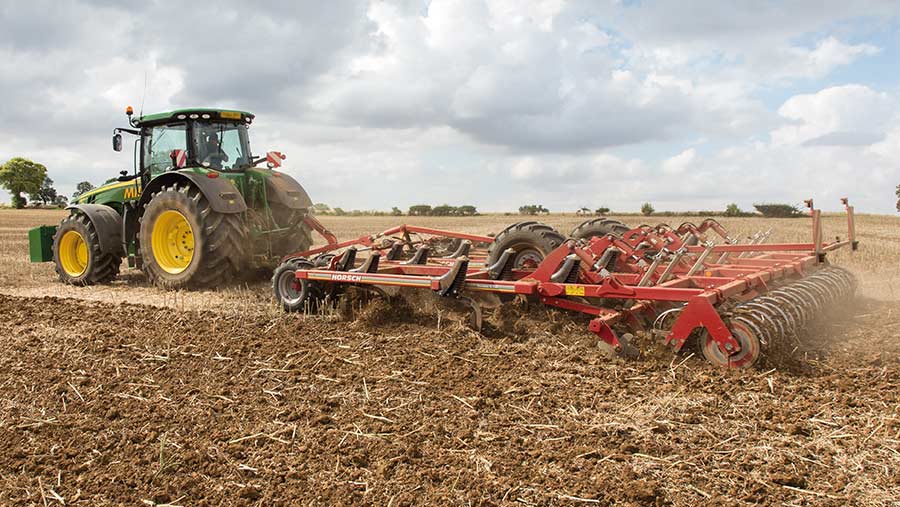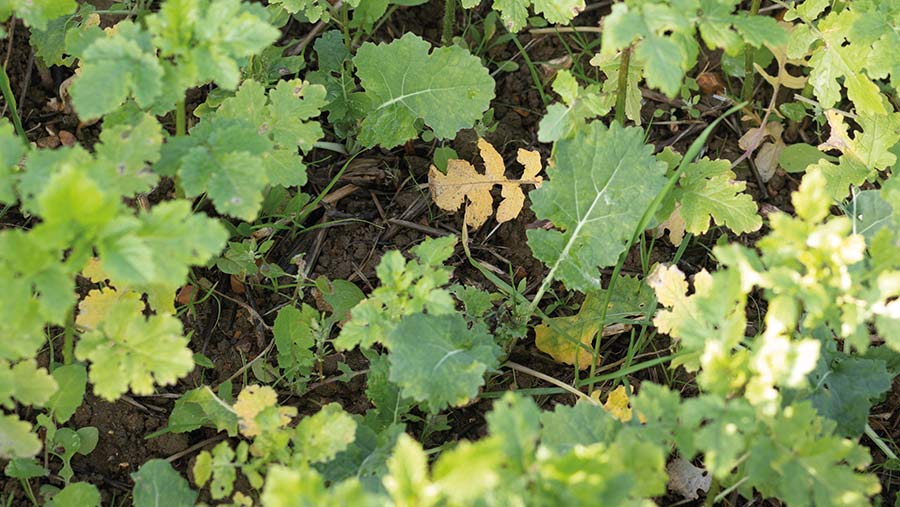New advice on volunteers for tackling flea beetle in OSR
 © Blackthorn Arable
© Blackthorn Arable Early results suggest that cultivating oilseed rape stubbles immediately after harvest may reduce the adult cabbage stem flea beetle population significantly.
This is according to the latest findings from the cross-industry csfbSmart project.
See also: How starter fertiliser can raise pulse yields by 17%
In contrast, leaving volunteers to act as a trap crop won’t help to manage the pest and is likely to increase the national population, despite previous advice to the contrary based on older work, says project co-ordinator Colin Peters of Niab.
“Both findings emphasise the importance of making sure we have a better understanding of the life cycle of the cabbage stem flea beetle,” he says.
“Previous guidance wasn’t necessarily wrong; it’s just that things have changed since those studies were done.”

© Tim Scrivener
Timely cultivations reducing beetle populations
Mr Peters points to promising results from 2022, which suggest the pest is vulnerable at the pupae stage while it is still in the ground, with timely cultivations taking out high numbers of the beetle just as the new crop is being established.
Work on two Cambridgeshire farms with very high beetle populations showed reductions of up to 90% in adults emerging from the soil when cultivated straight after the OSR was combined, compared with non-cultivated ground.
The findings come from a limited number of sites in just one year.
However, previous experience with pest numbers on farms where straw raking is being used to reduce slug damage shows similar effects.
This suggests that cultivations can have a major role in reducing beetle numbers.
“If the beetles are still in the ground as pupae and haven’t hatched, they appear to be vulnerable,” he says.
“We still need to understand more about the cultivations that work best and if the weather affects the results, as well as any effects on parasitoids, but post-harvest cultivations do seem to help manipulate the flea beetle population.”
In the absence of effective chemical control methods, alternative management methods are being investigated by the csfbSmart project which aims to get a better understanding of the pest’s biology.
Rethink volunteers as a trap crop
The work also suggests that leaving volunteers as a trap crop for newly hatched adults is not the right thing to do and could increase the national flea beetle population.
This goes against what growers have been advised to date, stresses Mr Peters, who reveals that water traps left in volunteers this summer didn’t contain beetles, even though emergence traps in the same fields contained high numbers.
“Many insects are programmed to move and fly away when they emerge from the ground.”
Volunteers were at the cotyledon stage as the beetles hatched this year, he notes, backing up this finding from a network of farms around the country.
“There isn’t any research work that shows that volunteers work as trap crop and can contribute to a reduction in pest numbers. They may, however, have an impact on the establishment of crops adjacent to the volunteers.”
Bespoke emergence traps used during 2022 also showed that beetles continue to emerge from the ground into December – far later than was previously thought.
That changes the length of the egg laying period and resulting stem larval numbers and could have implications for other pest management strategies, says Mr Peters.
“It also helps to explain why longer-lasting companion crops might help in an integrated pest management strategy. We need to have a rethink about the whole life cycle of the pest.”
Long-lasting companion crops
Longer-term companion crops appear to help with reducing cabbage stem flea beetle larvae numbers, reveals Colin Peters.
Mr Peters is looking for more UK growers prepared to leave companion crops until the end of February so that stem sampling can be done.
On-farm monitoring shows that keeping companion crops going, rather than taking them out in the autumn, dilutes adult beetle egg-laying, with corresponding falls in larvae numbers.
Companion crops containing at least one other species to the oilseed rape also meet the requirements of the intermediate soil standard in the Sustainable Farming Incentive (SFI), which attracts a £40/ha payment.
Results from 2022 show that OSR crops without companions had a sizeable increase in larvae numbers, says Mr Peters.
“This means we need to understand more about how to grow companion crops and how much they compete with the rape crop, as well as what the best species are to use.
“We also need to be able to plan herbicide use to deal with weed issues.”
In the same way, growers could look at having oilseed rape as part of an overwinter cover crop before spring cereals, he suggests, so that it acts as a trap crop.
“In an effective integrated pest management strategy, you need to provide somewhere for the insects to go.”

© Tim Scrivener
More sites needed
Colin Peters is keen to hear from growers with sites that have oilseed rape with longer-term companion crops, so his team can carry out free-of-charge sampling.
All the results will be shared with participants. Email Colin at Niab at colin.peters@niab.com

